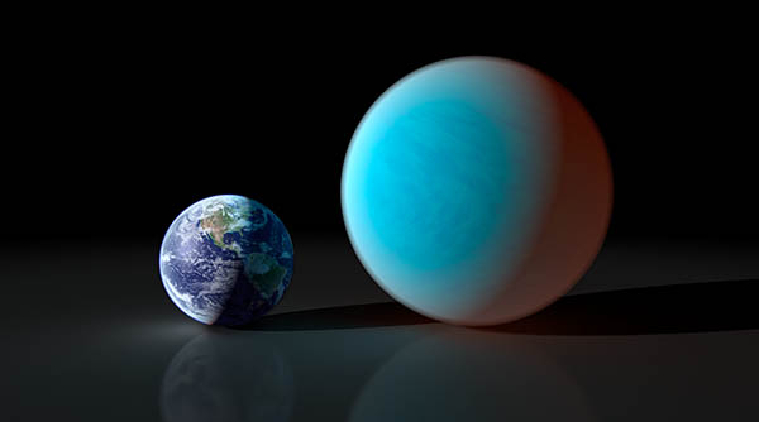 This artists concept contrasts our familiar Earth with the exceptionally strange planet known as 55 Cancri e. Image Credit: NASA/JPL-Caltech/R. Hurt (SSC)
This artists concept contrasts our familiar Earth with the exceptionally strange planet known as 55 Cancri e. Image Credit: NASA/JPL-Caltech/R. Hurt (SSC)
Astronomers at the University of Canterbury (UC) have found a new “one in a million” Super-Earth planet towards the genre of the galaxy. The planet-hunters’ research has been published in The Astronomical Journal, which states that the size and orbit of this planet are comparable to that of Earth.
The newly discovered planet is among only a handful of extra-solar planets that have been detected with both sizes and orbits close to that of Earth, the researchers said in a press release.
“To have an idea of the rarity of the detection, the time it took to observe the magnification due to the host star was approximately five days, while the planet was detected only during a small five-hour distortion,” paper’s lead author Dr Herrera Martin of UC’s School of Physical and Chemical Sciences in the College of Science said, describing the planet-finding discovery as incredibly rare.
“After confirming this was indeed caused by another ‘body’ different from the star, and not an instrumental error, we proceeded to obtain the characteristics of the star-planet system,” he adds.
Size and orbit of the new planet
As per the research, the host star of the new planet is about 10 per cent the mass of our Sun, which in turn makes a ‘year’ on the planet of approximately 617 days. Researchers also said that the new planet would have a mass somewhere between the Earth and Neptune, and would orbit at a location between Venus and Earth from the parent star.
How the planet was discovered
Researchers discovered using the gravitational microlensing technique. The combined gravity of the planet and its host star caused the light from a more distant background star to be magnified in a particular way. “We used telescopes distributed around the world to measure the light-bending effect,” Martin said.
The microlensing effect is rare, with only about one in a million stars in the galaxy being affected at any given time, Martin explained, adding that this type of observation does not repeat, and the probabilities of catching a planet at the same time are extremely low.
Express Tech is now on Telegram. Click here to join our channel (@expresstechnology) and stay updated with the latest tech news
“These experiments detect around 3000 microlensing events each year, the majority of which are due to lensing by single stars,” the paper’s co-author Associate Professor Michael Albrow said.
“Dr Herrera Martin first noticed that there was an unusual shape to the light output from this event, and undertook months of computational analysis that resulted in the conclusion that this event was due to a star with a low-mass planet,” he added.